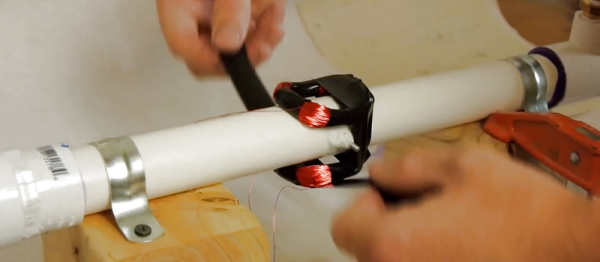It’s probably always going to be easier to just find some dry wood and make a cooking fire, but if you’re ever in a real bind and just happen to have a bunch of magnets and a treadmill motor, this DIY induction cooktop could be your key to a hot breakfast.
For those not familiar with them, induction cooktops are a real thing. The idea stretches all the way back to the turn of the last century, and involves using a strong magnetic field to induce eddy currents in the metal of a cooking vessel. As [K&J Magnetics] explains, the eddy currents are induced in a conductor by changing magnetic fields nearby. The currents create their own magnetic field which opposes the magnetic field that created it. The resulting current flows through the conductor, heating it up. For their cooktop, they chose to spin a bunch of powerful neodymium magnets with alternating polarity using an old treadmill motor. The first try heated up enough to just barely cook an egg. Adding more magnets resulted in more heat, but the breakthrough came with a smaller pan. The video below shows the cooktop in action.
It’s worth noting that commercial induction cooktops use coils and a high-frequency alternating current instead or rotating magnets. They also are notoriously fussy about cookware, too. So, kudos to [K&J] for finding success with such an expedient build. As a next step, we’d love to see the permanent magnets replaced with small coils that can be electrically commutated, perhaps with a brushless motor controller. Continue reading “Cooking Eggs With Magnets In Motion”













